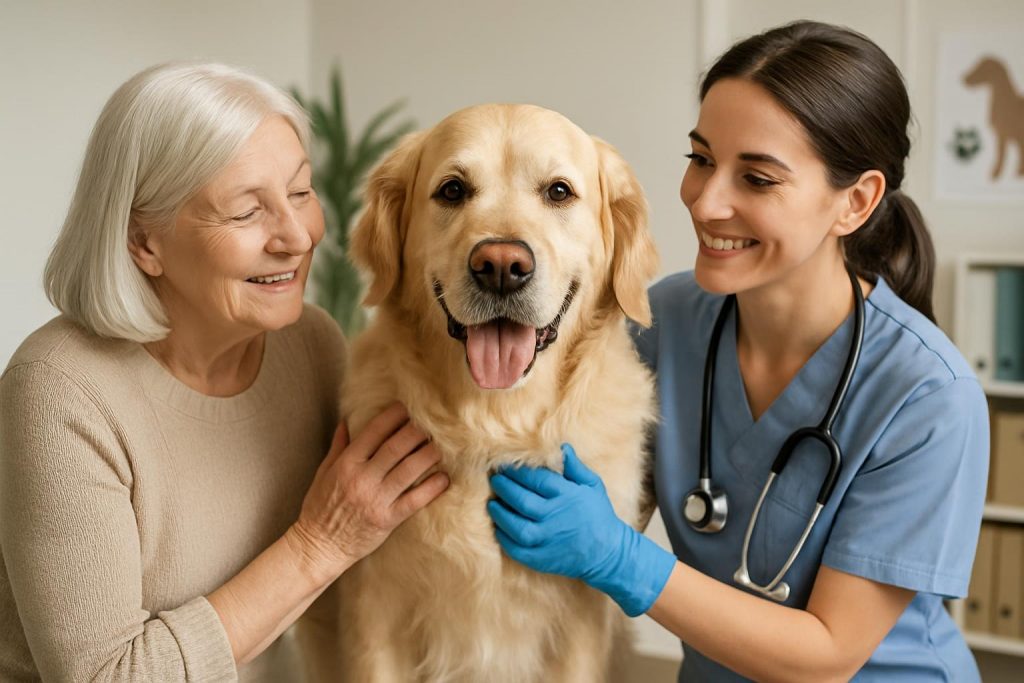Physical Address
304 North Cardinal St.
Dorchester Center, MA 02124
Physical Address
304 North Cardinal St.
Dorchester Center, MA 02124
How Pet Insurance Supports Senior Dog Wellness Exams: A Complete Guide

Dogs entering their senior years face higher chances of chronic illnesses, joint problems, and cognitive decline. Senior dogs, like people, benefit from frequent examinations; proactive health tracking helps them thrive. For many owners, however, the challenge is affordability. Pet insurance supports senior dog wellness exams by alleviating the financial burden, promoting more frequent vet visits, and guaranteeing the early detection of health problems that might otherwise be missed.
If you want to know more about what to watch for, check out this guide: 7 Common Health Problems to Look for When You Have a Senior Dog.
Senior wellness exams are more detailed than standard checkups. They focus on detecting age-related health changes before they escalate.
A vet checks heart, lungs, skin, eyes, ears, and joints for early warning signs.
Blood and urine tests reveal hidden conditions like diabetes, kidney disease, or thyroid problems.
Gum disease is common in older dogs and can lead to systemic issues impacting heart and kidney health if untreated.
Senior dogs often struggle with obesity or unexplained weight loss, both requiring dietary adjustments.
Detecting stiffness or pain early allows for treatment with supplements, medications, or physical therapy.
Conditions like cancer or kidney disease are easier to manage if caught early through regular screenings.
Preventive care costs less and improves quality of life compared to waiting until symptoms worsen.
Some insurance providers offer add-ons that cover wellness exams, lab tests, and even supplements.
Long-term conditions like arthritis, diabetes, and heart disease may be covered if the policy is purchased before diagnosis. For more details on managing two common chronic conditions, read Best Senior Cat Health Tips: Managing Kidney Disease and Arthritis.
Insurance spreads costs into manageable monthly premiums, incentivizing owners to schedule regular exams.
When costs are reimbursed, pet owners are less hesitant to bring their dogs for checkups.
Bloodwork, X-rays, and ultrasounds are expensive but vital in senior care—insurance often helps offset these costs.
Wellness add-ons may cover dental cleanings, which reduce the risk of systemic infections.
A single senior wellness visit can easily cost $500–$800. With insurance, much of this can be reimbursed or fully covered depending on the plan.
These optional packages may include annual exams, vaccines, dental cleaning, and blood tests.
A 9-year-old Labrador had arthritis detected during a routine wellness exam, covered by insurance. Early treatment extended mobility by years. For more on managing mobility, see Effective Pain Relief for Senior Dogs and Cats with Mobility Issues.
A 12-year-old poodle’s insulin and monitoring costs were largely reimbursed, saving the owner thousands annually.
A golden retriever’s ultrasound, biopsy, and chemotherapy were covered under a comprehensive plan, giving the dog more quality years.
Many vets offer in-house wellness plans that bundle exams, vaccines, and discounts on lab work.
Setting aside a monthly amount in a pet savings account ensures funds are available for wellness visits.
Senior dogs deserve the best care in their golden years, and regular wellness exams are the cornerstone of longevity and quality of life. Yet, these visits can be costly. That’s why pet insurance supports senior dog wellness exams by lowering financial barriers, covering essential diagnostics, and encouraging proactive veterinary care. By choosing the right policy and staying consistent with checkups, you give your senior dog not only more years—but significantly better years.
Ready to prepare for your senior dog’s best years? Shop essential pet care items now:
🔗 For a complete overview of what senior care involves, read Caring for Older Dogs: A Complete Guide and learn more about senior dog care at the American Veterinary Medical Association (AVMA).